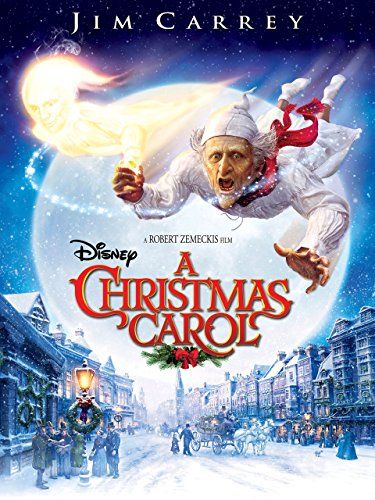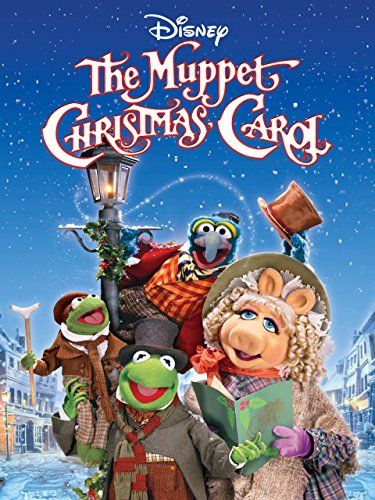How ‘A Christmas Carol’ invented modern time travel
Every year, right around the time of the winter solstice, families across the country gather around dinner tables or hearths or Zoom calls to celebrate the spirit of the holiday – which, depending on your interpretation, involves gifts, gratitude, feasts and… time travel.
Yeah. Time travel. The Doc Brown, “Doctor Who,” sci-fi thing. Bear with me a second, this is gonna be sort of weird but I promise it’s fun and even, I’m not kidding, makes perfect sense: A Christmas Carol invented both modern time travel and helped define modern Christmas, so it must therefore be concluded that time travel is as important a part of the holiday as gift giving, mistletoe, “Die Hard” and seeing relatives get drunker than is comfortable. But let’s back up.
A New Tradition
Some people might not realize that Christmas, in its contemporary and American form, is a somewhat new tradition, as well as an eclectic one. The significance of evergreen trees in winter belongs to many cultures that predate Christianity itself, and kissing under a mistletoe branch comes from Norse mythology: Frigg, the goddess of fertility, resurrected her son Baldur from death after he was killed by Loki, who shot him with an arrow poisoned with the plant, which was his only weakness. In gratitude, she declared the plant a symbol of herself, and promised to kiss anyone she caught beneath it.
Santa Claus and his gifts, on the other hand, are a recent American invention: it wasn’t until the Industrial Revolution that we had a middle class who could afford presents (not to mention factories to produce those presents), which allowed gift giving to enter the holiday tradition in the first place. And the image of St. Nicholas as a fat, happy guy in a red suit who gave out presents was created by cartoonist Thomas Nast as Civil War propaganda: the jolly old elf was originally depicted draped in the flag and giving gifts to Union Soldiers (and Union Soldiers only).
In fact, some historians have argued that no era in history had more influence on how we celebrate Christmas as much as the Victorians (1837 – 1901), and it was Charles Dickens’ story “A Christmas Carol,” published in 1843 (50 years before HG Wells’ “The Time Machine”), that distilled this new celebration into specific archetypes of gratitude and generosity. But this new holiday was an amalgam of new traditions that were grossly anachronistic, if not downright revisionist, so it’s easy to see how Dickens landed on the concept of “time travel” as we currently know it.
An Iconic Story
To refresh your memory, “A Christmas Carol” tells the story of rich miser Ebeneezer Scrooge, who scoffs at the idea of Christmas and, despite acquiescing to his employee’s request for a day off, is generally a grump to everybody about it until he’s visited by three ghosts: the ghost of Christmas Past, the Ghost of Christmas Present, and of course the Ghost of Christmas Yet to Come. The ghosts of past and “yet to come” take him to the past and future respectively, showing supernatural time travel powers, while the ghost of present simply takes him on a walking tour because, all things considered, he’s kind of a bottom-shelf ghost.
In century and a half since its release, we’ve seen “A Christmas Carol” adapted countless memorable times, starring everyone from The Muppets (“The Muppet Christmas Carol”), dead-eyed CG Jim Carrey (“Disney’s A Christmas Carol”) to my personal favorite, 1980s cokehead Bill Murray (“Scrooged”). It’s the quintessential Christmas story, as even its cheeky title implies: Not only does “A Christmas Carol” not bother to communicate anything about the plot, it lies to you, since the dang thing is a novella, and not a “carol” (which is a kind of song or dance) at all.
In case you can’t tell, that has bothered me from a very young age.
Science Fiction and Magic
Well before Dickens was born, the seminal notions that would eventually form time travel were part of the storytelling tradition. The ability to see into the future is of course as old as any mythology, but other characters had specifically leapt forward or back through time: “Rip Van Winkle,” written by Washington Irving in 1819, tells the story of a man who sleeps for 20 years, which is something like time travel except for the fact that he is unable to return to his present, so it’s more like he was granted an extended lifespan at the cost of sleeping through a huge chunk of it. “L’An 2440,” or “The Year 2440,” is a French story from 1771 that depicts a man who, like Van Winkle, falls asleep and wakes up in Paris 700 years in the future.
While you can argue that these stories involve characters leaving their native time periods, none of them feature the hallmarks of the “time travel story,” which is characters moving back and forth between different periods to change the present, future, or even past. Joe in “Looper” fights to save his future by, ironically, murdering his further-future self. Bill and Ted in “Bill & Ted’s Excellent Adventure” have to pass a history exam in order to save a utopian future. Marty McFly in “Back to the Future” improves his family’s life while avoiding paradoxes and incest. It’s that – the characters’ ability to interact with, and usually mess with, time that makes it a real time travel story.
In “A Christmas Carol,” Scrooge meets the Ghost of Christmas Future, who shows him how miserably his life is destined to end: he watches as people actually celebrate his demise. This is different from the archetypal “visions of the future” that pervade fiction earlier fiction and myth because Scrooge sees the events with his own eyes, has a profound emotional reaction, and vows then and there to be a better man.
“Good Spirit,” he pursued, as down upon the ground he fell before it: “Your nature intercedes for me, and pities me. Assure me that I yet may change these shadows you have shown me, by an altered life!”
Scrooge can change his future, of course. The story famously ends with him joyously celebrating Christmas with the family he had earlier mocked.
Even “The Time Machine,” which invented the idea of traveling through time with technology rather than the supernatural, doesn’t toy with the malleability of fate the way Dickens does here.
Only problem is… now that I’ve proven beyond any argument that “A Christmas Carol” is a sci-fi classic, I don’t really know what to do with this information, aside from argue that we need more Time Travel Christmas movies? As far as I can tell, we only have “The Knight Before Christmas,” “Scrooged” (duh), Groundhog Day” (sorta), and “The Family Man” (also only sorta). Probably others (I didn’t research this part) but it’s definitely not enough, and it’s high time we embraced the fact that time travel and science fiction are just as important a part of Christmas as the tree or Santa Claus himself.



